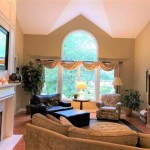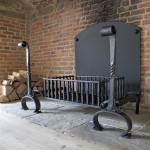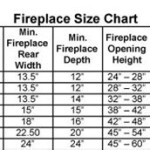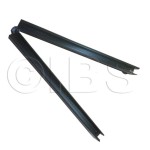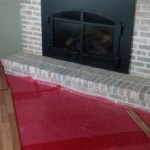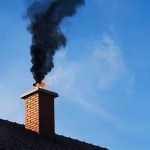Is It Ok To Put a TV Above a Gas Fireplace? Considerations for Heat, Safety, and Viewing
The question of whether it is acceptable to mount a television above a gas fireplace is a common one, reflecting the desire to optimize space and create a visually appealing focal point in a room. While the aesthetic benefits are undeniable, the practical considerations surrounding heat exposure, safety regulations, and ideal viewing angles must be thoroughly examined before proceeding with such an installation. This article will explore the multifaceted aspects of this decision, providing a comprehensive overview of the factors that contribute to a successful and safe outcome.
Mounting a television above a fireplace, particularly a gas fireplace, presents a unique set of challenges. Unlike electric fireplaces, gas fireplaces produce substantial heat, which can potentially damage sensitive electronic components. Furthermore, the placement of a television high above the floor often results in an uncomfortable viewing experience. Therefore, a careful assessment of the fireplace's heat output, the television's heat tolerance, and the room's layout is crucial.
Heat Management and Television Longevity
The primary concern regarding placing a television above a gas fireplace is the potential for heat damage. Modern televisions, particularly LCD and OLED models, are composed of delicate electronic components that are susceptible to degradation when exposed to excessive heat. The long-term effects of prolonged heat exposure can include reduced lifespan, screen discoloration, pixel damage, and even complete failure of the television.
Gas fireplaces generate heat that rises upward, directly impacting the wall space above the unit. The temperature in this area can fluctuate significantly depending on the fireplace's BTU (British Thermal Unit) rating, the frequency of use, and the type of mantel or heat shield installed. A fireplace with a high BTU output will produce more heat, increasing the risk of damage to the television.
To mitigate the risk of heat damage, several strategies can be employed. Firstly, a professional assessment of the fireplace's heat output is essential. This can be achieved by using a surface thermometer to measure the temperature of the wall above the fireplace after it has been operating for an extended period. The measured temperature should be compared to the television manufacturer's recommended operating temperature range, typically found in the product specifications. Most televisions are designed to operate safely within a range of 32°F to 104°F (0°C to 40°C). Exceeding this range can void the warranty and lead to premature failure.
Secondly, the installation of a mantel or heat shield can significantly reduce the amount of heat that reaches the television. A mantel acts as a barrier, deflecting heat away from the wall and allowing cooler air to circulate. The effectiveness of a mantel depends on its depth and material. A deeper mantel provides better protection, and materials like stone or concrete are more effective at absorbing and dissipating heat compared to wood or metal. Heat shields, often made of metal, are designed to reflect heat away from the wall. These can be installed directly above the fireplace or integrated into the mantel design.
Thirdly, proper ventilation is crucial. Ensuring adequate airflow around the television helps to dissipate heat and prevent it from accumulating. This can be achieved by leaving sufficient space between the television and the wall, as well as ensuring that the area behind the television is not enclosed. Avoid placing the television in a recessed niche above the fireplace without proper ventilation, as this can trap heat and exacerbate the problem. Consider using fans to circulate air around the television, especially if the fireplace is used frequently.
Ultimately, the decision to mount a television above a gas fireplace must be based on a careful evaluation of the heat output and the television's heat tolerance. If the heat output is excessive, alternative mounting locations should be considered. If mounting above the fireplace is the only option, implementing heat management strategies is essential to protect the television and ensure its longevity.
Safety Requirements and Installation Guidelines
In addition to heat management, adherence to safety requirements and proper installation guidelines is paramount when mounting a television above a gas fireplace. Building codes and manufacturer recommendations often outline specific requirements for the installation of fireplaces and electronic devices, and these must be followed to ensure the safety of the occupants and prevent fire hazards.
Local building codes typically dictate the minimum clearances required between a gas fireplace and combustible materials, such as wood framing and drywall. These clearances are designed to prevent the ignition of surrounding materials due to excessive heat. Before installing a television above a gas fireplace, it is crucial to consult with local building inspectors or qualified contractors to determine the specific clearance requirements for the fireplace and the surrounding wall. Failure to comply with these requirements can result in fines, insurance complications, and, in extreme cases, a fire hazard.
The mounting of the television itself also requires careful consideration. The wall above the fireplace must be structurally sound enough to support the weight of the television. Using a stud finder, identify the wall studs and ensure that the mounting bracket is securely attached to them. If the wall is not strong enough to support the television, additional reinforcement may be necessary. Consulting with a professional installer is recommended to ensure that the mounting is secure and complies with safety standards.
The electrical wiring for the television must also be installed safely. All electrical work should be performed by a qualified electrician to ensure compliance with electrical codes. Wiring should be concealed within the wall to prevent tripping hazards and improve aesthetics. A dedicated electrical outlet should be installed near the television mounting location, and the outlet should be properly grounded. Avoid using extension cords or daisy-chaining power strips, as these can overload the circuit and create a fire hazard.
Furthermore, the gas fireplace itself should be regularly inspected and maintained to ensure its safe operation. A qualified technician should inspect the fireplace annually to check for gas leaks, proper ventilation, and the condition of the burner and other components. Maintaining the fireplace in good working order reduces the risk of malfunctions that could lead to excessive heat output or other safety hazards.
Prioritizing safety is essential when combining a television and a gas fireplace. Adhering to building codes, following manufacturer recommendations, and engaging qualified professionals for installation and maintenance can help to mitigate the risks and ensure a safe and enjoyable viewing experience.
Optimizing Viewing Angle and Ergonomics
Beyond the technical considerations of heat and safety, the viewing angle and ergonomics of a television mounted above a gas fireplace are crucial factors that impact the overall viewing experience. Placing a television too high can result in neck strain, eye fatigue, and a less immersive viewing experience. Optimizing the viewing angle and seating arrangement is essential to ensure comfort and enjoyment.
The ideal viewing angle for a television is generally considered to be at eye level when seated. This allows the viewer to comfortably watch the screen without straining their neck. When a television is mounted above a fireplace, it is often positioned significantly higher than eye level. This can lead to discomfort and fatigue, especially during extended viewing sessions.
To mitigate the effects of a high viewing angle, several strategies can be employed. Firstly, consider using a tilting mount that allows the television to be angled downward towards the viewing area. This can help to improve the viewing angle and reduce neck strain. The amount of tilt required will depend on the height of the television and the distance from the seating area.
Secondly, adjust the seating arrangement to optimize the viewing distance. The further away the seating area is from the television, the less noticeable the high viewing angle will be. Consider placing the seating area further back in the room to create a more comfortable viewing distance. A general rule of thumb is to multiply the screen size in inches by 1.5 to determine the ideal viewing distance in inches. For example, a 55-inch television should be viewed from approximately 82.5 inches (6.8 feet) away.
Thirdly, select a television with a wide viewing angle. Some televisions have better viewing angles than others, meaning that the image quality remains consistent even when viewed from an off-axis position. Look for televisions that are specifically designed for wide viewing angles, such as those with IPS (In-Plane Switching) panels. These panels offer better color accuracy and contrast when viewed from the side.
Finally, consider the overall aesthetics of the room when determining the television's placement. While optimizing the viewing angle is important, it is also necessary to consider the overall design of the room. The television should be integrated seamlessly into the room's decor, and its placement should not detract from the overall aesthetic appeal. Achieving a balance between optimal viewing ergonomics and aesthetic considerations is essential for creating a comfortable and visually appealing living space.
In conclusion, mounting a television above a gas fireplace requires careful consideration of heat management, safety requirements, and viewing ergonomics. By addressing these factors, it is possible to create a safe, functional, and aesthetically pleasing entertainment space.

3 Tips For Installing A Tv Over Your Fireplace

Gazco Studio 3 Gas Fire Rigbys

Pros And Cons Of Mounting Your Tv Over Fireplace Vancouver Gas Fireplaces

Mounting Your Tv Above Fireplace
Mounting A Tv Above Your Gas Fireplace Heat Glo

Tv Above Gas Fire Houzz

How To Safely Mount Your Tv Above The Fireplace

ᑕ❶ᑐ What To Consider Before Mounting A Tv Above Fireplace

Mounting Your Tv Above Fireplace

Can I Mount A Tv Over My Fireplace Warming Trends
Related Posts

